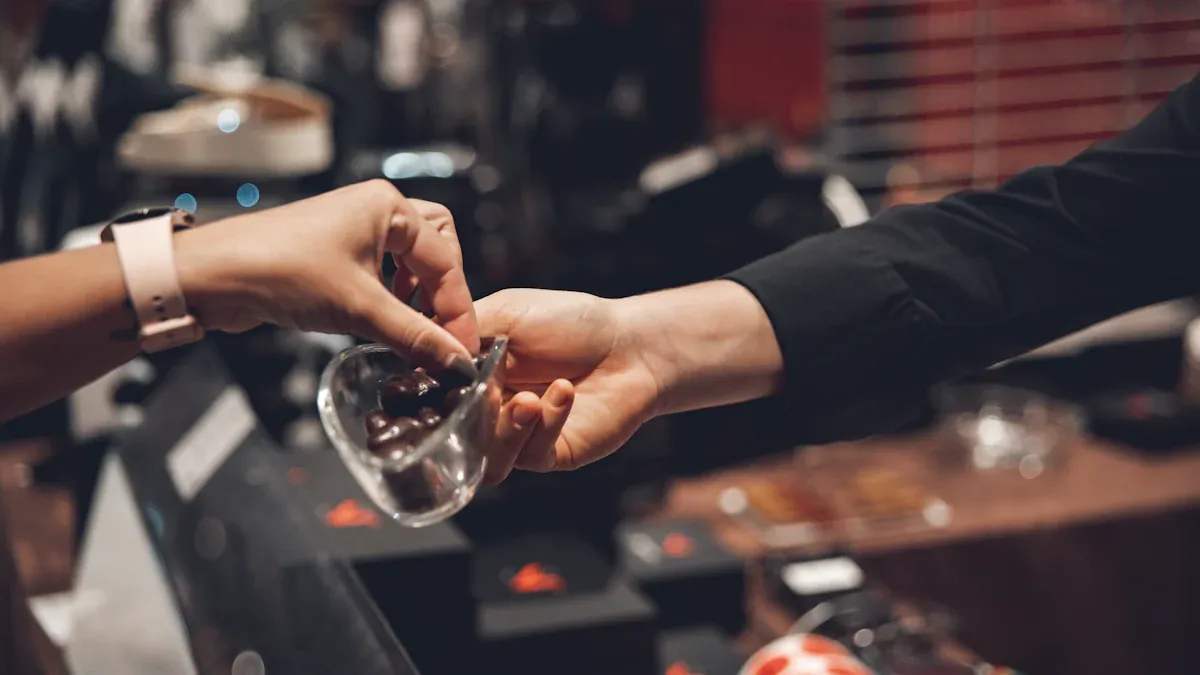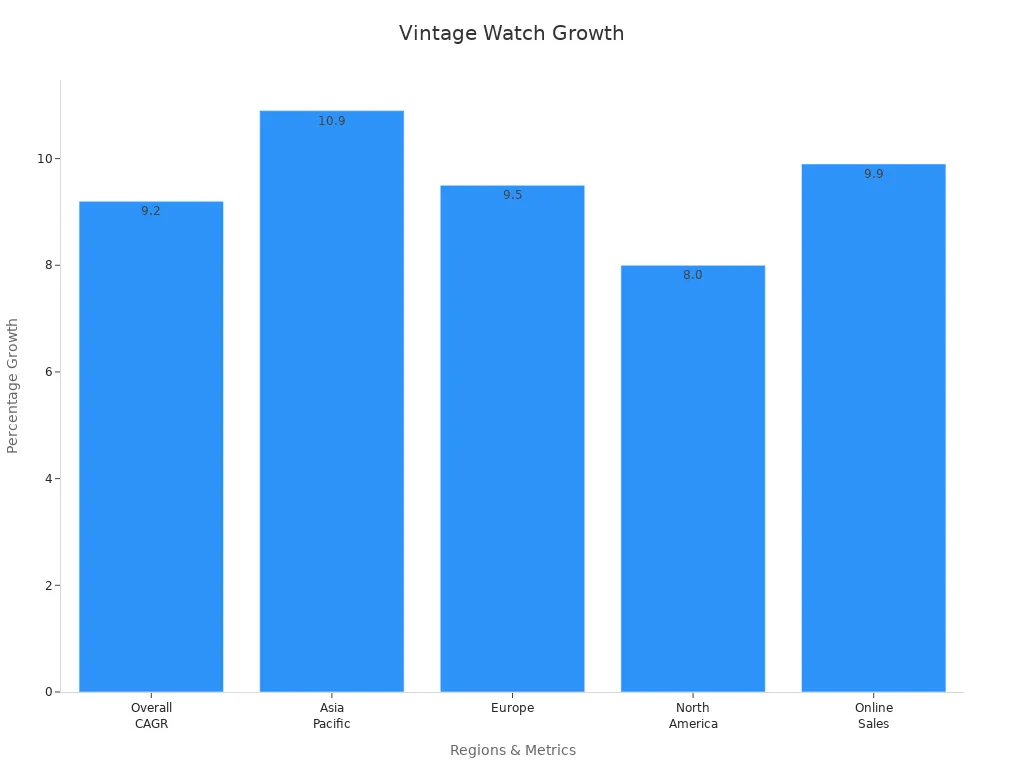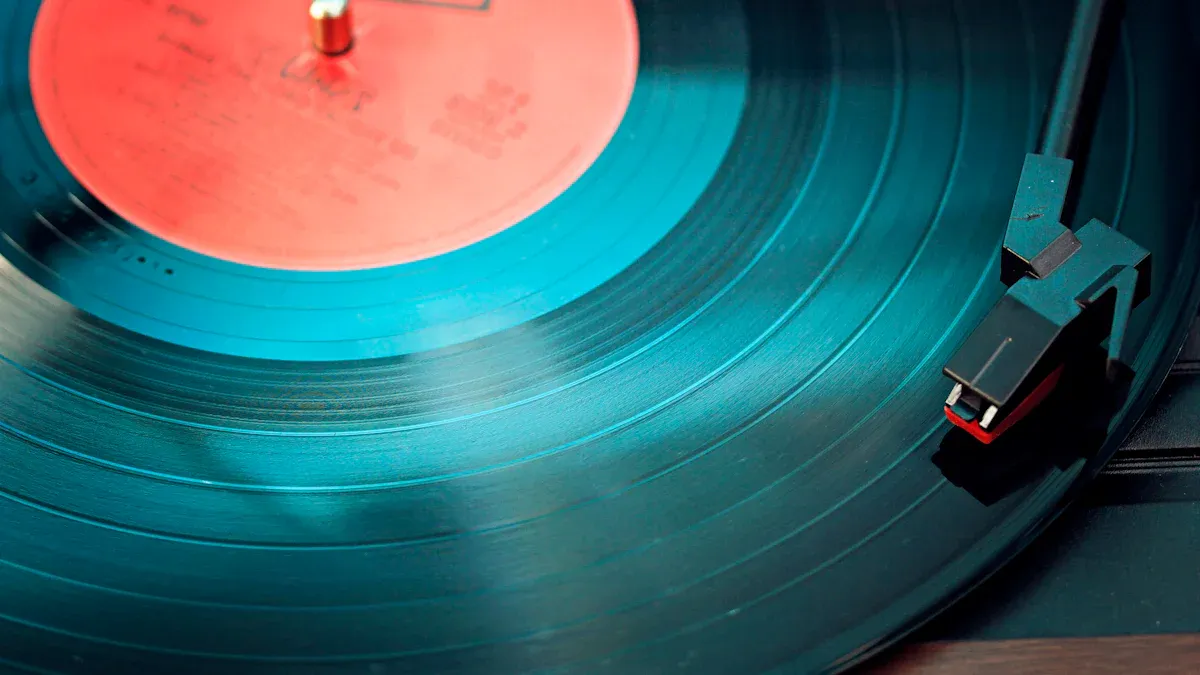Pre-Owned Vintage Watches and the surge in popularity of 90s & 2000s timepieces
You see the world of pre-owned vintage watches thriving like never before. The renewed interest in 90s and 2000s watches brings a wave of nostalgia and a desire for unique design. Many watch enthusiasts and collectors appreciate the blend of timeless style with modern relevance. This trend highlights how a timepiece becomes more than just an accessory—it reflects personal taste, history, and investment potential.
Key Takeaways
The market for pre-owned vintage watches is growing fast, with strong demand from younger buyers and online sales making it easier to find authentic pieces.
Watches from the 90s and 2000s stand out for their unique designs, blending modern technology with nostalgic style that appeals to collectors.
Neo-vintage watches offer a perfect mix of reliability and character, making them popular for personal expression and sustainable fashion choices.
Vintage watches can be smart investments, especially iconic models that often increase in value when kept in good condition with proper documentation.
Starting a collection requires careful research, buying from trusted sources, and focusing on authenticity, condition, and long-term value to build a meaningful and lasting collection.
Surge in Pre-Owned Vintage Watches

Market Growth
You might notice that the world of pre-owned vintage watches has transformed into a vibrant marketplace, drawing in both seasoned collectors and newcomers alike. The numbers tell a compelling story. In 2023, the global market for pre-owned vintage watches reached an impressive $24.38 billion. Experts project this figure will soar to $45.01 billion by 2030, with a compound annual growth rate (CAGR) of 9.2%. This remarkable expansion reflects a broader trend in luxury, where authenticity and heritage matter more than ever.
Metric/Region | Value/Rate |
|---|---|
Global Market Size (2023) | USD 24.38 billion |
Projected Market Size (2030) | USD 45.01 billion |
CAGR (2024-2030) | 9.2% |
Asia Pacific CAGR | 10.9% |
Europe CAGR | 9.5% |
North America CAGR | 8.0% |
Automatic Watches Revenue Share | 66.2% (2023) |
Online Sales CAGR | 9.9% |

You see this growth reflected in the way people shop for watches. Online platforms now account for over half of all second-hand watch sales, and digital authentication has increased consumer trust by nearly 50%. Certified pre-owned programs influence more than half of all purchases, making it easier for you to find a piece that feels both special and secure. The market’s expansion also comes from a shift in who is buying: 42% of Gen Z and millennials now drive demand, and first-time luxury buyers have increased their interest in pre-owned watches by 35%.
46% increase in demand for vintage mechanical watches
38% of luxury watch enthusiasts prefer second-hand models
58% of purchases influenced by certified pre-owned programs
51% of sales now happen online
49% rise in consumer trust due to digital authentication
52% reduction in counterfeit risk
The luxury and pre-owned watch markets have grown from $18 billion in 2018 to an expected $30 billion by 2025. Even though fewer watches sold during the pandemic, the value per watch increased, showing that you and other collectors now seek quality and exclusivity over quantity. The overall watch market is set to reach $117.8 billion by 2025, with a CAGR of 13%. This signals a strong, ongoing trend toward vintage watches and, more specifically, the neo-vintage era.
Collector Demand
You might wonder why so many collectors now focus on watches from the 90s and 2000s. The answer lies in the unique blend of nostalgia, design, and investment potential these decades offer. The neo-vintage trend has captured the imagination of the watch collecting community, with collectors seeking pieces that balance modern reliability with the charm of earlier eras. Neo-vintage watches, especially those from the 90s and 2000s, stand out for their innovative use of materials, distinctive aesthetics, and the stories they carry.
Recent sales data highlights this shift. For example, a Rolex Cellini 4127 Wood from the 1990s now commands a market price of $10,639, while a Patek Philippe 3738 Ellipse Jumbo from the 2000s fetches $24,984. These figures show that collectors value not just the brand, but the era and the narrative behind each watch. Auction records reveal that limited-edition models, such as the Zenith El Primero from the early 21st century, have sold for more than double their estimates, reflecting a surge in demand for neo-vintage watches.
You see this trend echoed in the broader community. Over 38% of luxury watch enthusiasts now prefer pre-owned vintage watches, and the neo-vintage category continues to grow in popularity. Collectors appreciate the authenticity and individuality these pieces offer, often viewing them as wearable art that connects the past with the present. The neo-vintage trend also appeals to those who value sustainability and conscious fashion, as choosing pre-owned vintage watches supports a more thoughtful approach to style.
Tip: When you explore the world of neo-vintage watches, you join a community that values history, craftsmanship, and personal expression. Each piece tells a story, and your collection becomes a reflection of your own journey through time.
Why 90s & 2000s Stand Out

Design Evolution
You step into the world of 90s and 2000s watches and discover a period of remarkable transformation. During these decades, designers embraced new technologies that changed how watches looked and felt on your wrist. CAD technology, for example, allowed watchmakers to create intricate shapes and experiment with bold, geometric forms. You see the results in the rise of integrated bracelet designs, where the bracelet flows seamlessly into the case, giving each watch a unified and modern appearance.
Designers used advanced software like Gemvision's Matrix and JewelCAD to push creative boundaries. These tools made it possible to model complex, organic structures and test them virtually before production. Parametric design methods let you enjoy watches with unique curves and customizable features. 3D printing also played a role, making it easier to prototype and refine new ideas quickly. As a result, you find watches from this era with silver-toned metals, innovative textures, and a level of detail that stands out from earlier decades.
Note: The 90s and 2000s marked a shift toward experimentation, with brands using mathematical modeling and even early AI tools to create watches that felt both futuristic and timeless.
Neo-Vintage Appeal
You feel the pull of neo-vintage watches because they capture the spirit of a generation. The neo-vintage trend celebrates pieces that blend the reliability of modern engineering with the character of vintage watches. When you wear a neo-vintage watch, you connect with the optimism and creativity of the late 20th and early 21st centuries.
Cultural shifts during these decades brought a renewed focus on individuality and self-expression. You see this reflected in the bold dials, playful color palettes, and daring case shapes that define neo-vintage watches. Many collectors, like you, seek out neo-vintage models for their nostalgic value and the stories they tell. The neo-vintage category stands out because it offers a bridge between the past and present, letting you enjoy the best of both worlds.
Neo-vintage watches often feature:
Integrated bracelets and ergonomic cases
Silver-toned metals and innovative finishes
Distinctive dial layouts and playful details
You join a growing community that values authenticity, comfort, and a sense of personal history. Neo-vintage watches invite you to express your style while honoring the craftsmanship and creativity of a unique era.
Vintage Watches as Investments
Value Trends
You might notice that the investment landscape for watches has shifted dramatically in recent years. Many collectors now view these timepieces as more than just accessories—they see them as assets with the potential for impressive returns. The market for pre-owned watches reached $23.87 billion in 2023, with experts projecting a steady annual growth rate of about 9.2%. North America leads this trend, thanks to a strong luxury culture and the rise of online authentication platforms. You can see how sustainability, the affordability of prestigious brands, and the enduring appeal of automatic movements drive this growth.
Aspect | Details |
|---|---|
Market Size (2023) | |
Projected CAGR | 9.2% |
Leading Region | North America |
Market Drivers | Sustainability, affordability, craftsmanship, value retention |
Key Players | Chrono24, WatchBox, eBay, Bob's Watches, Crown & Caliber, Watchfinder |
Trends | Online sales, authentication tech, expansion into new markets |
You see that certified pre-owned programs and advanced authentication technologies have made it easier to invest with confidence. These developments reduce counterfeit risks and increase trust, making the market more accessible and secure for you.
Iconic Models
Certain models have become legends in the world of vintage watches, not only for their design but also for their remarkable appreciation. The Rolex Daytona 116500LN stands out for its superior craftsmanship and enduring desirability. During the 2021 market boom, this model appreciated by 25%, showing how scarcity and brand prestige can drive prices upward. The Patek Philippe Nautilus 5711, with its iconic design and limited production, reached a peak secondary market price of around $160,000 in March 2022 before settling near $95,000—still far above its value just five years ago.
According to recent reports, vintage watches appreciate 8.4% more annually than modern pieces, with rare models from Patek Philippe and Rolex delivering the highest returns. Luxury watches priced above $50,000 often yield average annual returns of 15-20%. You can see how these timepieces have become symbols of style, craftsmanship, and exclusivity, making them coveted investments for those who appreciate both beauty and financial potential.
Tip: When you choose a vintage watch, you invest in a piece of history that can elevate your style and grow in value over time. Let your collection reflect your taste and your confidence in timeless design.
Shifting Preferences in Pre-Owned
Modern vs. Vintage
You may notice a growing sense of fatigue among collectors when it comes to modern luxury sports models. Many watch enthusiasts now seek something beyond the uniformity and immediate depreciation that often come with new releases. Instead, you find yourself drawn to the character-rich world of neo-vintage and vintage watches, where each piece tells a unique story and carries a sense of history that modern designs sometimes lack.
The market shows a clear shift from new luxury sports models to pre-owned vintage watches with distinctive features.
Younger collectors entering the scene often prefer vintage and entry-level luxury pieces, valuing individuality over mass production.
The secondary market offers immediate availability, better value retention, and access to discontinued or rare models that you cannot find in current catalogs.
Neo-vintage watches stand out for their historical significance, unique patina, and rare dial variations, making them especially appealing to those who appreciate authenticity.
While modern watches offer warranties and pristine condition, the pre-owned market provides diversity, value, and a sense of discovery.
Neo-vintage watches bridge the gap between old and new, offering functional features and accessibility while preserving the individuality that defines true vintage pieces. You experience a different sensation when wearing these watches—the lighter weight, smaller dimensions, and the comfort of hollow bracelet links create a distinct presence on your wrist. Rarity and provenance further enhance their appeal, with original packaging and documentation adding to their desirability.
Accessibility
You see the world of watch collecting opening up as the pre-owned market becomes more accessible than ever. Rising prices for new luxury watches, driven by tariffs and increased gold costs, have made vintage and neo-vintage options more attractive. Sales at leading pre-owned retailers have surged, reflecting a growing demand for discontinued styles and rare finds.
The inventory at many pre-owned retailers now consists mostly of discontinued models from beloved luxury brands, giving you access to pieces that once seemed out of reach.
Younger, educated buyers enter the market, viewing luxury watches as appreciating assets rather than mere accessories.
The pre-owned market benefits from price increases in new watches, making neo-vintage and vintage models a practical and stylish choice.
Authentication and provenance remain crucial, with specialized platforms and expert appraisals ensuring you can buy with confidence.
Within the watch community, independent brands and celebrity endorsements also play a role in shaping trends. You might notice how a favorite actor or musician wearing a neo-vintage piece can spark renewed interest and inspire your own collecting journey. The watch community thrives on shared stories and discoveries, making each acquisition feel personal and meaningful.
Tip: When you explore neo-vintage watches, you join a vibrant watch community that values authenticity, comfort, and the joy of finding something truly unique. Let your collection reflect your style and your appreciation for craftsmanship that stands the test of time.
Starting Your Collection
Tips for Pre-Owned
When you begin your journey into pre-owned vintage watches, you step into a world where knowledge and preparation make all the difference. You want to ensure every piece you add to your collection brings both joy and value. Consider these practical tips as you start:
Use data-driven platforms like EveryWatch, WatchCharts, and ChronoPulse to track pricing trends and historical sales. These tools help you understand market dynamics and spot the right moment to buy.
Build relationships with trusted dealers and independent sellers. This network gives you access to authenticated pieces and expert advice.
Plan your budget carefully. Remember to include not just the purchase price, but also authentication fees, insurance, storage, and maintenance. Setting aside about 20% of your budget for these costs helps you avoid surprises.
Maintain thorough documentation. Original boxes, papers, and service records can increase resale value by up to 30%.
Prioritize condition. Seek watches with original finishes and complete sets, as these often command significant premiums.
Develop authentication expertise or rely on multiple verification methods, including manufacturer checks and expert opinions.
Adopt a long-term approach. Holding your watches for 7-10 years often yields the best appreciation and helps you ride out market cycles.
Note: The vintage watch market moves in cycles. What feels overlooked today may become tomorrow’s sought-after treasure. Staying informed and patient gives you an edge.
What to Look For
As you evaluate potential additions to your collection, focus on these essential criteria:
Always verify authenticity. Counterfeiting remains a challenge, so buy from reputable sources and insist on expert authentication.
Assess condition with care. Watches in excellent shape with minimal wear and original parts hold their value best.
Research brand reputation and model popularity. Brands like Rolex and Patek Philippe often retain or increase in value.
Look for rarity and limited editions. These pieces tend to command higher prices and greater demand.
Ensure complete documentation. Original papers, certificates, and service records support authenticity and boost value.
Compare prices across multiple sources to avoid overpaying or falling for deals that seem too good to be true.
Stay updated on market trends. Use digital tools and expert reviews to make informed decisions.
A thoughtful approach helps you build a collection that reflects your style and stands the test of time. Each watch you choose becomes a chapter in your personal story, blending heritage, craftsmanship, and individuality.
You discover that pre-owned vintage watches from the 90s and 2000s offer a rare blend of nostalgia, value, and individuality. Each timepiece tells a story and brings a sense of history to your style. If you want to start or expand your collection, focus on authenticity and let your choices reflect your personal journey. Explore this world with curiosity and confidence, knowing you invest in both beauty and lasting craftsmanship.
FAQ
What makes 90s and 2000s watches different from older vintage models?
You notice that watches from these decades often feature sleeker lines, integrated bracelets, and advanced materials. Designers used new technology to create bold shapes and unique finishes. These pieces blend modern comfort with a nostalgic touch.
How do you verify the authenticity of a pre-owned vintage watch?
You should always request original papers, certificates, and service records. Trusted dealers and expert appraisers can help confirm authenticity. Digital authentication tools also add an extra layer of security.
Tip: Buy from reputable sources and ask for detailed documentation to protect your investment.
Are pre-owned watches a good investment?
You often find that well-chosen vintage watches hold or increase their value over time. Iconic models from respected brands tend to appreciate, especially when kept in excellent condition with original packaging.
Look for limited editions
Prioritize condition and provenance
How do you care for a vintage watch?
You should store your watch in a dry, cool place and avoid exposure to magnets or moisture. Regular servicing by a skilled watchmaker keeps it running smoothly. Gentle cleaning with a soft cloth preserves the finish.
Note: Thoughtful care helps your watch last for generations.
Timeless Luxury: Neo-Vintage Watches for the Thoughtful Modern Wardrobe
In today’s world, where luxury is evolving beyond mere possession to thoughtful expression, pre-owned vintage watches from the 90s and 2000s are setting a new standard for the modern wardrobe. These timepieces do more than tell time—they tell stories of craftsmanship, culture, and individuality that resonate with today’s conscious fashion lovers. At PlushPast, we see this surge not just as a trend but as a meaningful shift toward timeless style that honors sustainability and authenticity. Wearing a neo-vintage watch is about embracing comfort in knowing your choice reflects quality and care, while celebrating design that bridges past elegance with modern relevance. It’s a quiet confidence that your style is both personal and purposeful, a reminder that true luxury is found in pieces that enrich your story and stand the test of time.
Disclaimer: The information provided on www.plushpast.com is for general informational purposes only and does not constitute professional fashion, legal, or authenticity advice. While PlushPast strives to ensure all content is accurate and trustworthy, visitors should exercise personal judgment and conduct their own research when making purchasing decisions. PlushPast does not guarantee the accuracy of third-party information and disclaims any liability for decisions made based on the content presented on this website.